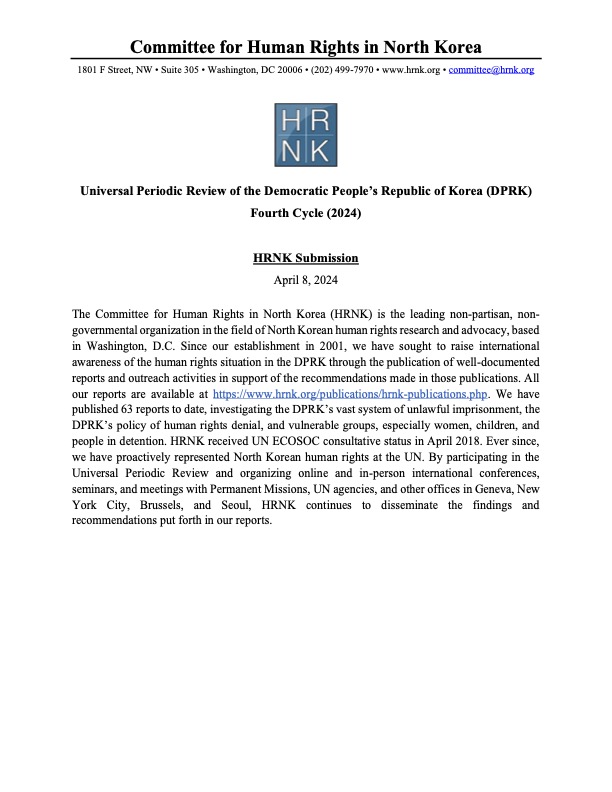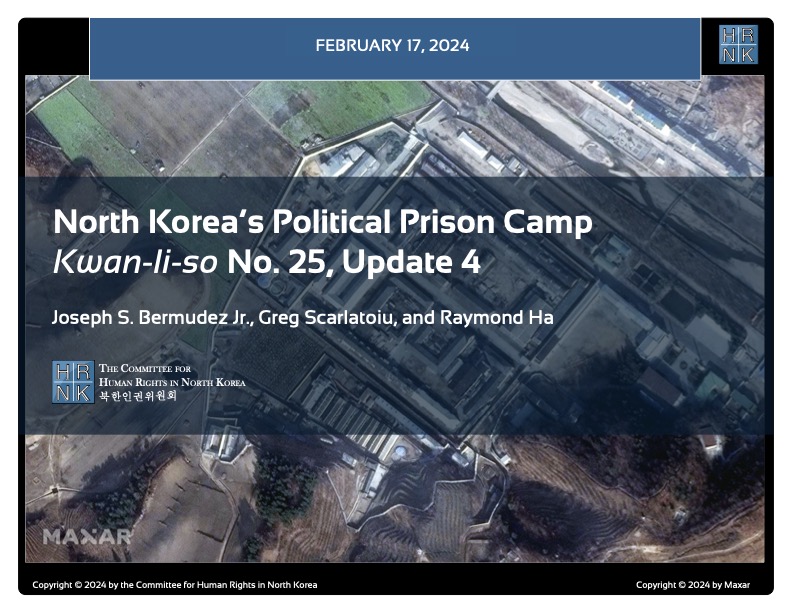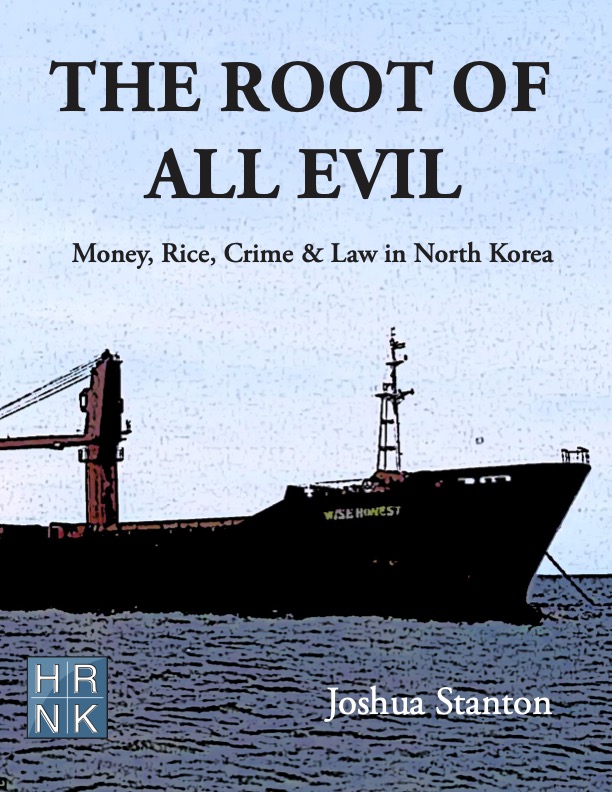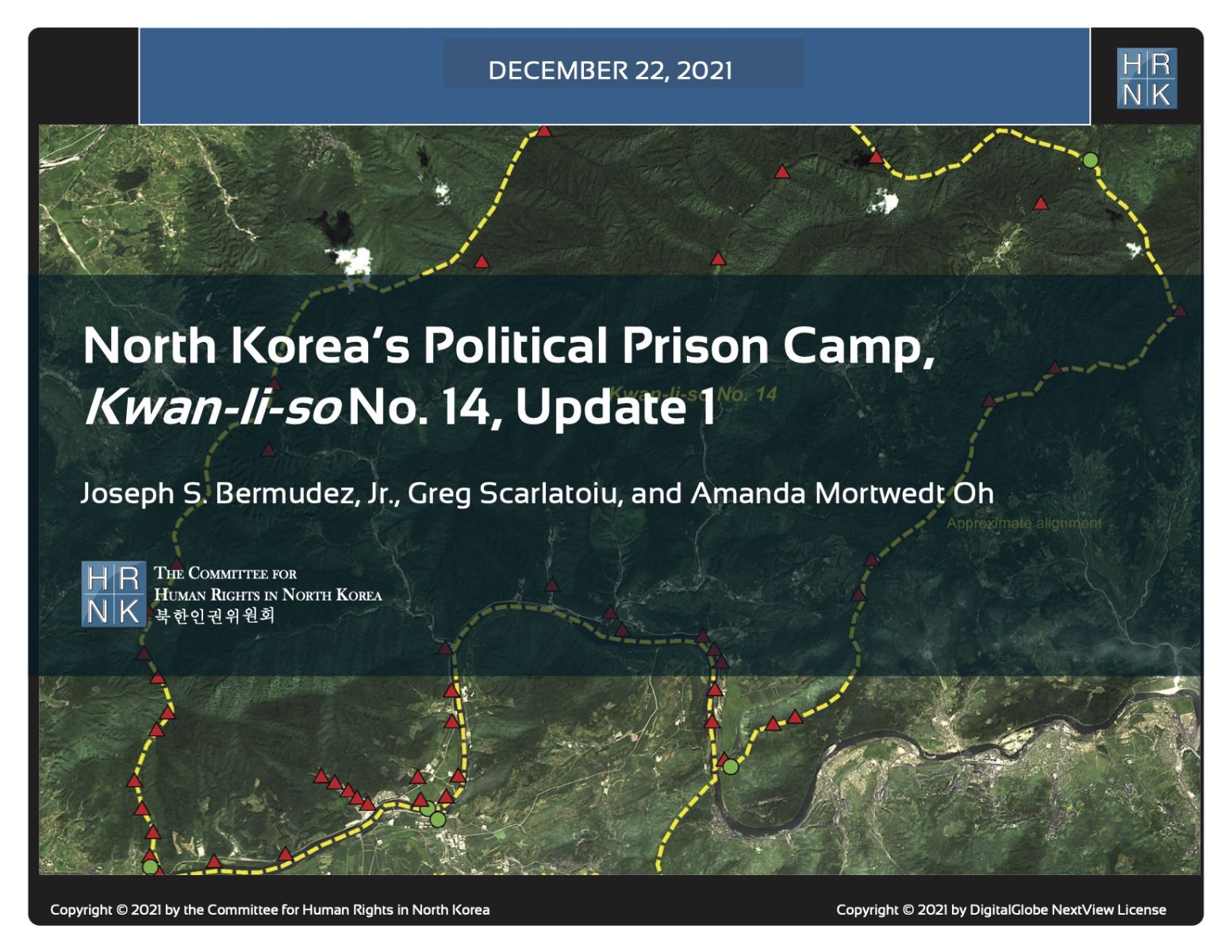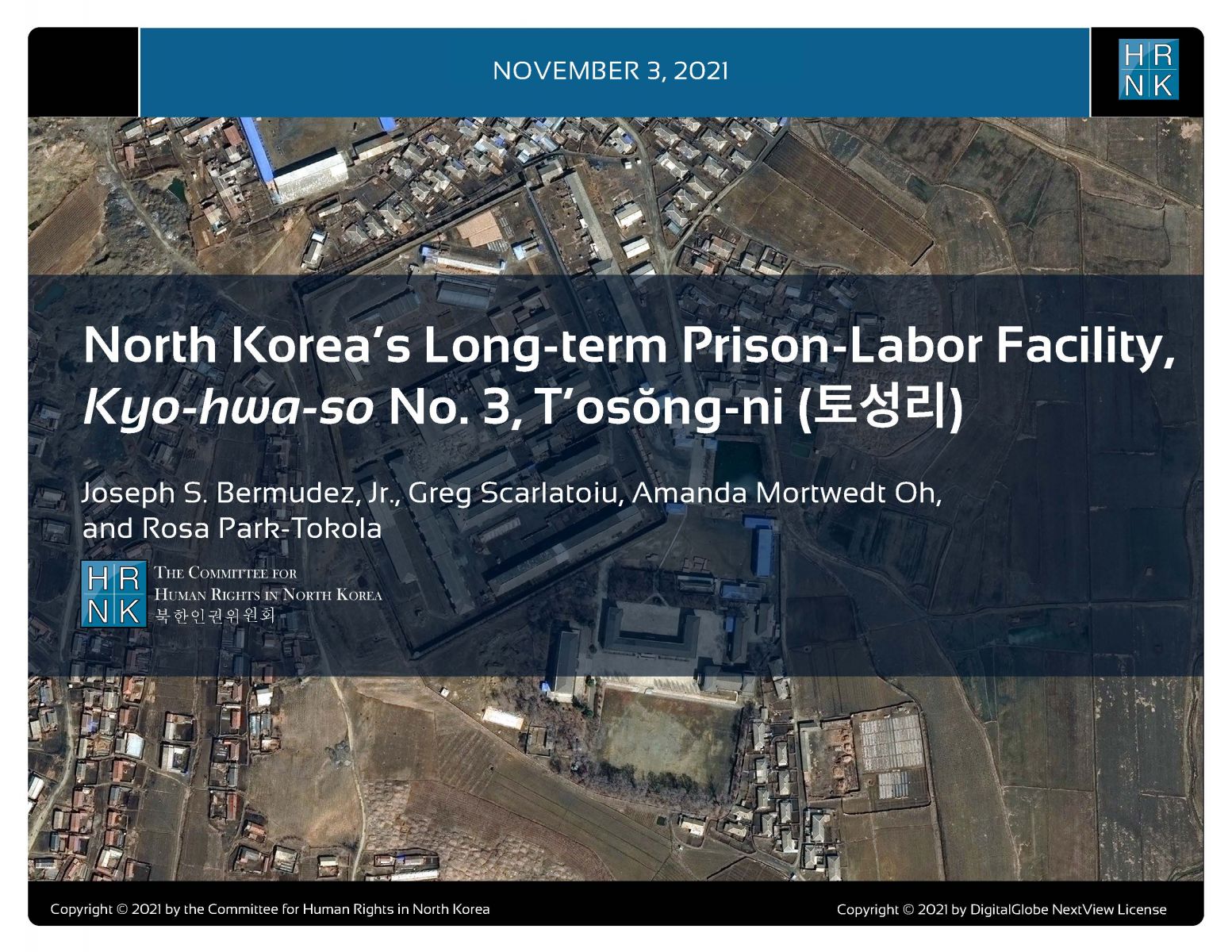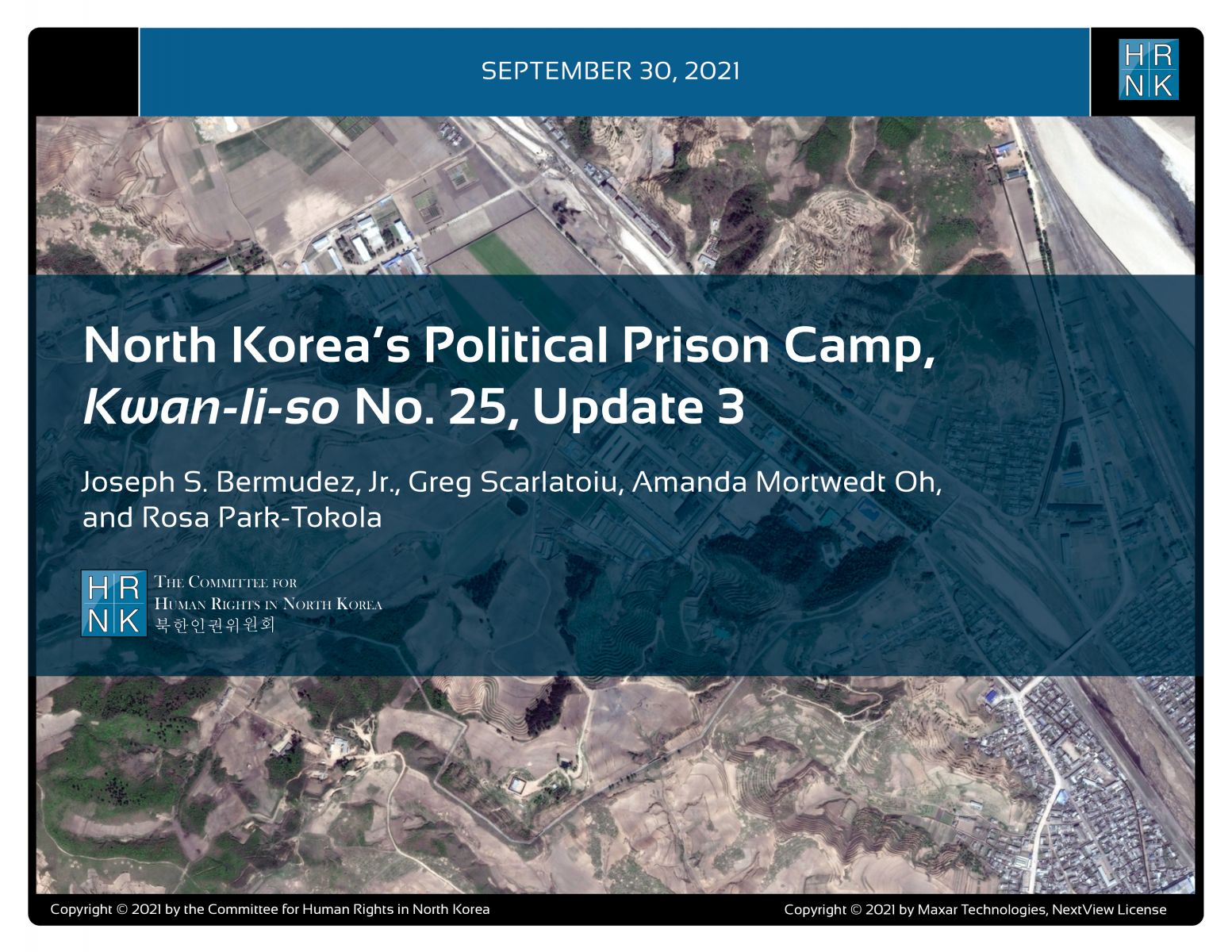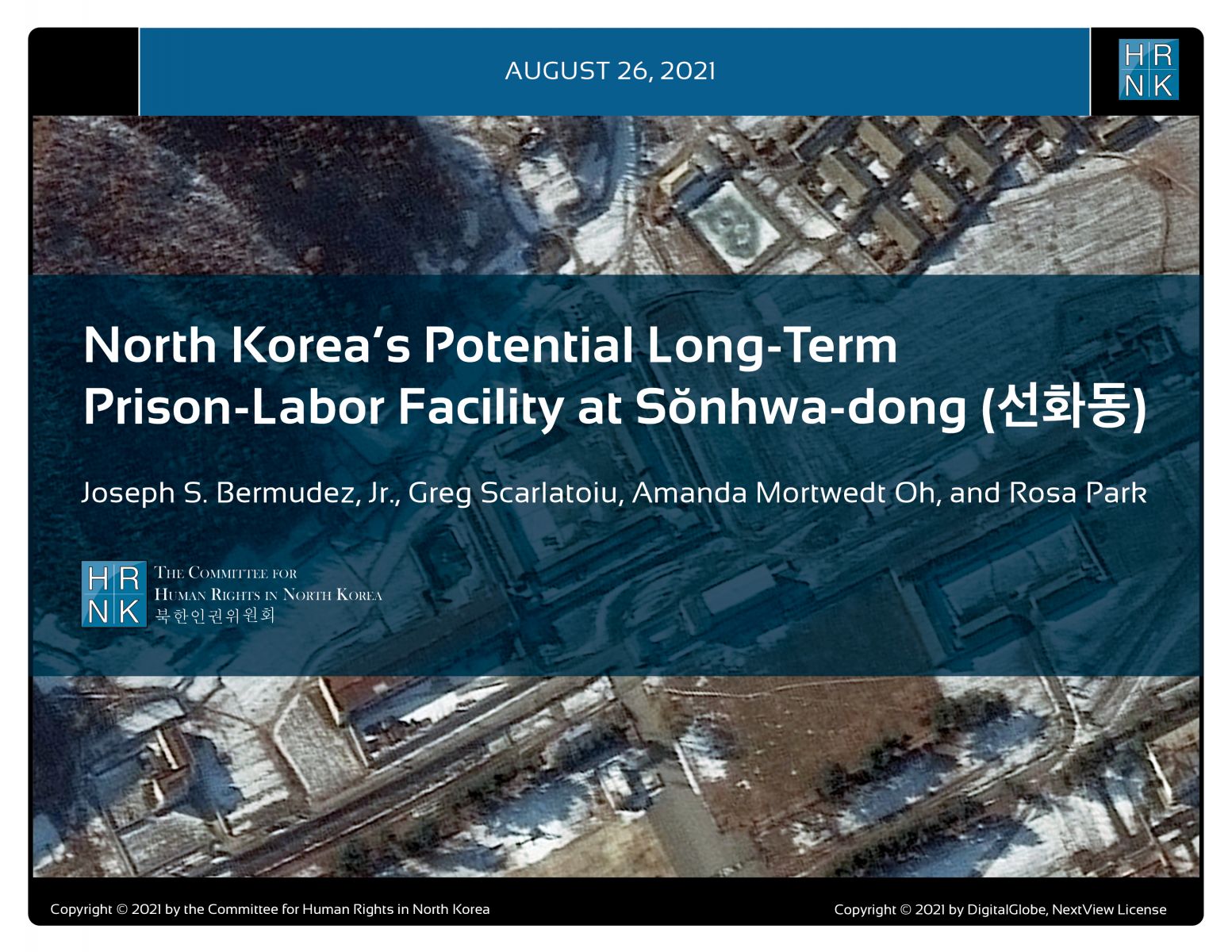Description:
Committee on Foreign Affairs U. S. House of Representatives 112th Congress
Chuck Downs:
Thank you, Madam Chairman. It is a great pleasure for me to be here today. As some of you may recall, I spent a few years working on Capitol Hill for the Policy Committee. I have the greatest respect for this particular committee and everything you have done for North Korea.
I appear before you today as the executive director of the U.S. Committee for Human Rights in North Korea, and my statement goes through a number of issues relating to North Korea, all of which you are familiar with. But you have asked me to focus on the North Korean Human Rights Act today, which this committee sponsored in 2004, and Madam Chairwoman, you reauthorized as recently as 2008. It is a great piece of legislation, one that stands as a hallmark of the American people’s interest in the human rights of the people of North Korea. You are to be commented for that incredible achievement, and it gives us a roadmap from which we can look at a number of issues relating to North Korean human rights.
Bob King, whose excellent appearance today, his fine testimony, and his recent trip to North Korea, is a living example of how wise it was to create a position of Special Envoy for North Korean Human Rights.
My organization had the pleasure of having as its distinguished co-chair for many years the late Congressman Stephen Solarz. I actually remember helping people prepare for testimony before Congressman Solarz when he was the chairman of one of your subcommittees.
His death is a great loss, as is that of former Congressman Lantos, he is with us in spirit today.
Two thousand and four was an extremely interesting year for human rights in North Korea. You will all immediately think that that was the year that the North Korean Human Rights Act was passed. I believe it was passed on July 21st of 2004. The same year, a former U.S. military defector, Charles Jenkins, managed to put the North Korean Government in a position of having to release him so that he could join with his wife, a former Japanese abductee, in Japan. He left North Korea on July 12th.
There was another big event also in July. Some 468 North Korean refugees who had made it through China, went through Yunnan Province, made it to Vietnam, and were sent back to South Korea with the approval of the government and the cooperation of the Government of Vietnam, socialist Vietnam, and the Government of the Republic of South Korea.
These actions, starting with the North Korean Human Rights Act, infuriated North Korea, and North Korea said in a formal statement issued by KCNA, the North Korean mouthpiece, ‘‘The DPRK will certainly make NGO organizations in some countries pay for the North Korean Human Rights Act.’’
On August 14, an American citizen, a young man from Utah, 24 years old, decided to travel by himself in Yunnan. He said goodbye to his friends who went back to Beijing, and he decided to go up the Leaping Tiger Gorge to a place called Zhongdian. He visited a restaurant there, a Korean restaurant, three times, and disappeared.
Our organization is looking very closely at the possibility that this American citizen, who spoke perfect Korean because he had been a Mormon missionary in Korea, and he spoke Chinese very well and, of course, he spoke English very well with a Midwestern standard dialect—he may, in fact, have been abducted by North Korea.
This would make the United States the 14th country to have lost an individual to North Korea. We quite often think that the Japanese were the only ones abducted from seaside resorts along the coast of Japan, but that is not, in fact, the case—the North Koreans have abducted four Lebanese, people from the Netherlands, people from France, and a Romanian.
The Romanian was lured to Hong Kong, found herself in Pyongyang. Malaysians and Singaporians were also lured to what they thought were job offers from people they thought were Japanese, and they ended up in Pyongyang. Many of these people were never heard from again except that they had made it into the notes of other abductees and other defectors and agents who eventually defected.
So thank you, Madam Chairwoman. I appreciate the opportunity to be here and to focus on the wide range of crimes that North Korea commits against human rights.
In this submission, HRNK focuses its attention on the following issues in the DPRK: The status of the system of detention facilities, where a multitude of human rights violations are ongoing. The post-COVID human security and human rights status of North Korean women, with particular attention to sexual and gender-based violence (SGBV). The issue of Japanese abductees and South Korean prisoners of war (POWs), abductees, and unjust detainees.
This report provides an abbreviated update to our previous reports on a long-term political prison commonly identified by former prisoners and researchers as Kwan-li-so No. 25 by providing details of activity observed during 2021–2023. This report was originally published on Tearline at https://www.tearline.mil/public_page/prison-camp-25.
This report explains how the Kim regime organizes and implements its policy of human rights denial using the Propaganda and Agitation Department (PAD) to preserve and strengthen its monolithic system of control. The report also provides detailed background on the history of the PAD, as well as a human terrain map that details present and past PAD leadership.
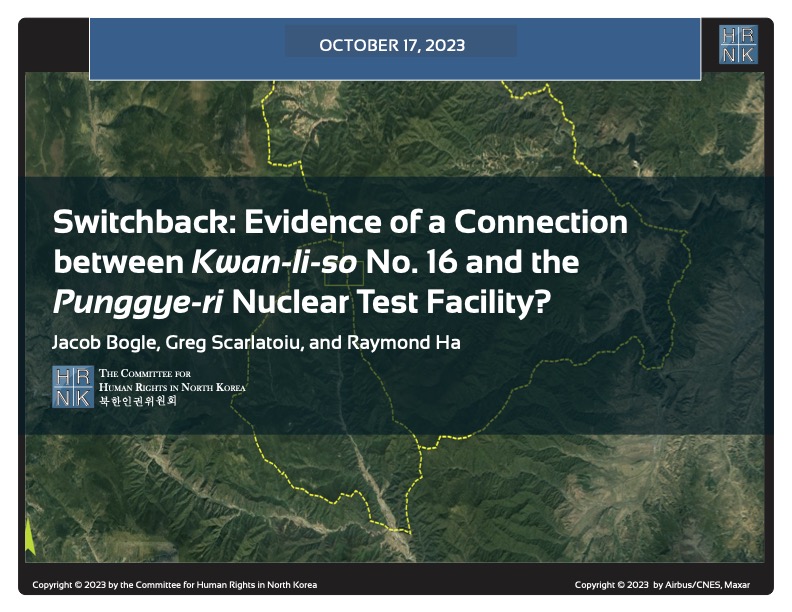
HRNK's latest satellite imagery report analyzes a 5.2 km-long switchback road, visible in commercial satellite imagery, that runs from Testing Tunnel No. 1 at North Korea's Punggye-ri nuclear test facility to the perimeter of Kwan-li-so (political prison camp) no. 16.
This report proposes a long-term, multilateral legal strategy, using existing United Nations resolutions and conventions, and U.S. statutes that are either codified or proposed in appended model legislation, to find, freeze, forfeit, and deposit the proceeds of the North Korean government's kleptocracy into international escrow. These funds would be available for limited, case-by-case disbursements to provide food and medical care for poor North Koreans, and--contingent upon Pyongyang's progress
For thirty years, U.S. North Korea policy have sacrificed human rights for the sake of addressing nuclear weapons. Both the North Korean nuclear and missile programs have thrived. Sidelining human rights to appease the North Korean regime is not the answer, but a fundamental flaw in U.S. policy. (Published by the National Institute for Public Policy)
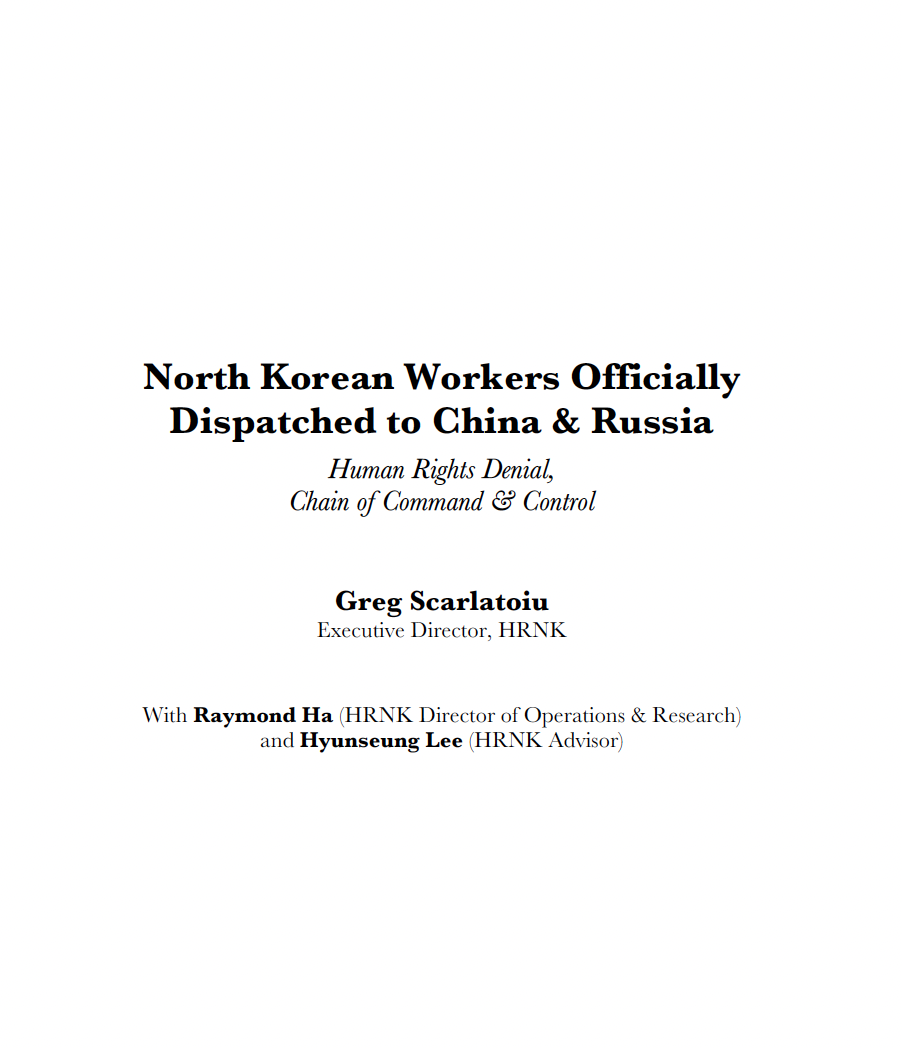
North Korea’s forced labor enterprise and its state sponsorship of human trafficking certainly continued until the onset of the COVID pandemic. HRNK has endeavored to determine if North Korean entities responsible for exporting workers to China and Russia continued their activities under COVID as well.
George Hutchinson's The Suryong, the Soldier, and Information in the KPA is the second of three building blocks of a multi-year HRNK project to examine North Korea's information environment. Hutchinson's thoroughly researched and sourced report addresses the circulation of information within the Korean People's Army (KPA). Understanding how KPA soldiers receive their information is needed to prepare information campaigns while taking into account all possible contingenc
This report is part of a comprehensive long-term project undertaken by HRNK to use satellite imagery and former prisoner interviews to shed light on human suffering in North Korea by monitoring activity at political prison facilities throughout the nation. This is the second HRNK satellite imagery report detailing activity observed during 2015 to 2021 at a prison facility commonly identified by former prisoners and researchers as “Kwan-li-so No. 14 Kaech’ŏn” (39.646810, 126.117058) and
This report is part of a comprehensive long-term project undertaken by HRNK to use satellite imagery and former prisoner interviews to shed light on human suffering in North Korea by monitoring activity at civil and political prison facilities throughout the nation. This study details activity observed during 1968–1977 and 2002–2021 at a prison facility commonly identified by former prisoners and researchers as "Kyo-hwa-so No. 3, T'osŏng-ni" and endeavors to e
This report is part of a comprehensive long-term project undertaken by HRNK to use satellite imagery and former detainee interviews to shed light on human suffering in the Democratic People’s Republic of Korea (DPRK, more commonly known as North Korea) by monitoring activity at political prison facilities throughout the nation. This report provides an abbreviated update to our previous reports on a long-term political prison commonly identified by former prisoners and researchers as Kwan-li-so
Through satellite imagery analysis and witness testimony, HRNK has identified a previously unknown potential kyo-hwa-so long-term prison-labor facility at Sŏnhwa-dong (선화동) P’ihyŏn-gun, P’yŏngan-bukto, North Korea. While this facility appears to be operational and well maintained, further imagery analysis and witness testimony collection will be necessary in order to irrefutably confirm that Sŏnhwa-dong is a kyo-hwa-so.
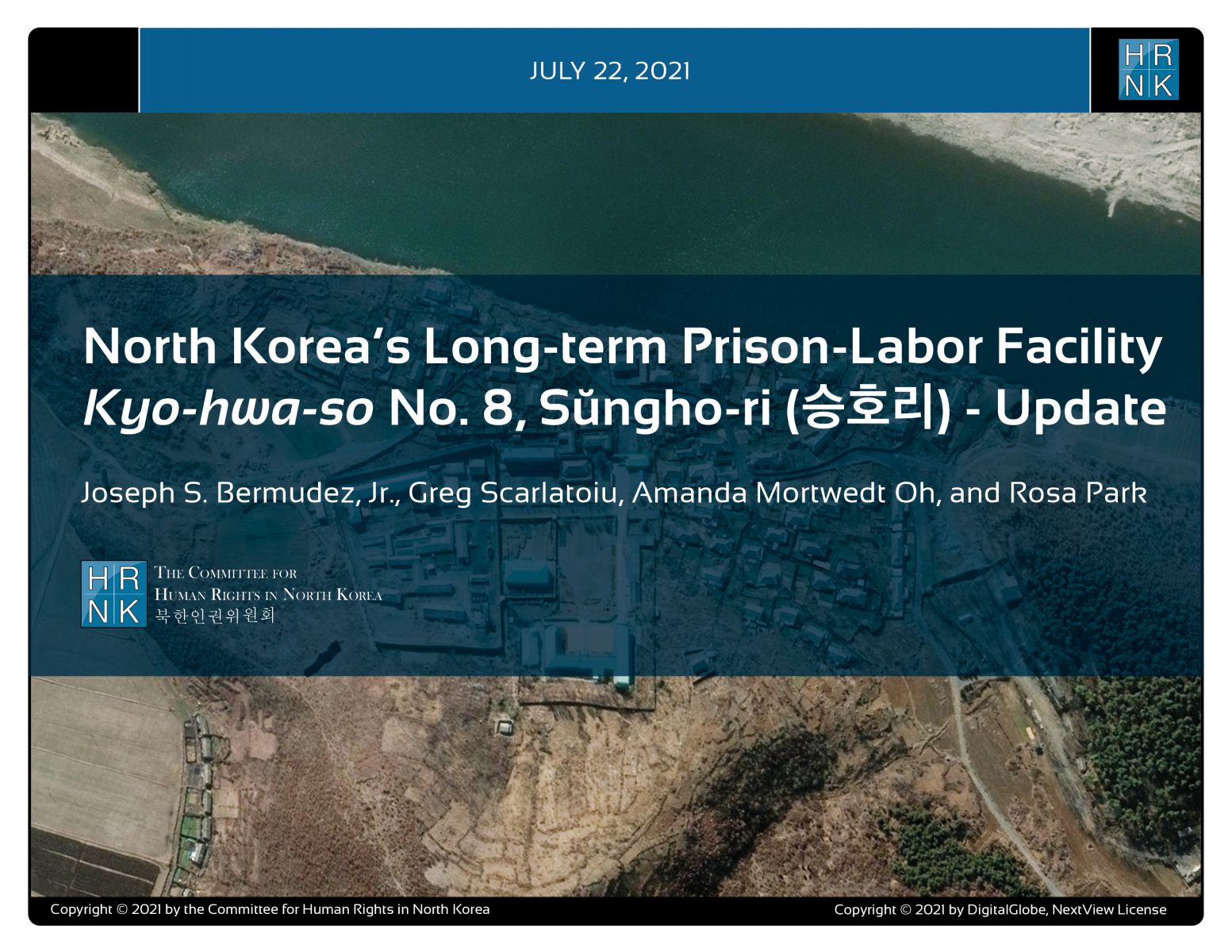
"North Korea’s Long-term Prison-Labor Facility Kyo-hwa-so No. 8, Sŭngho-ri (승호리) - Update" is the latest report under a long-term project employing satellite imagery analysis and former political prisoner testimony to shed light on human suffering in North Korea's prison camps.
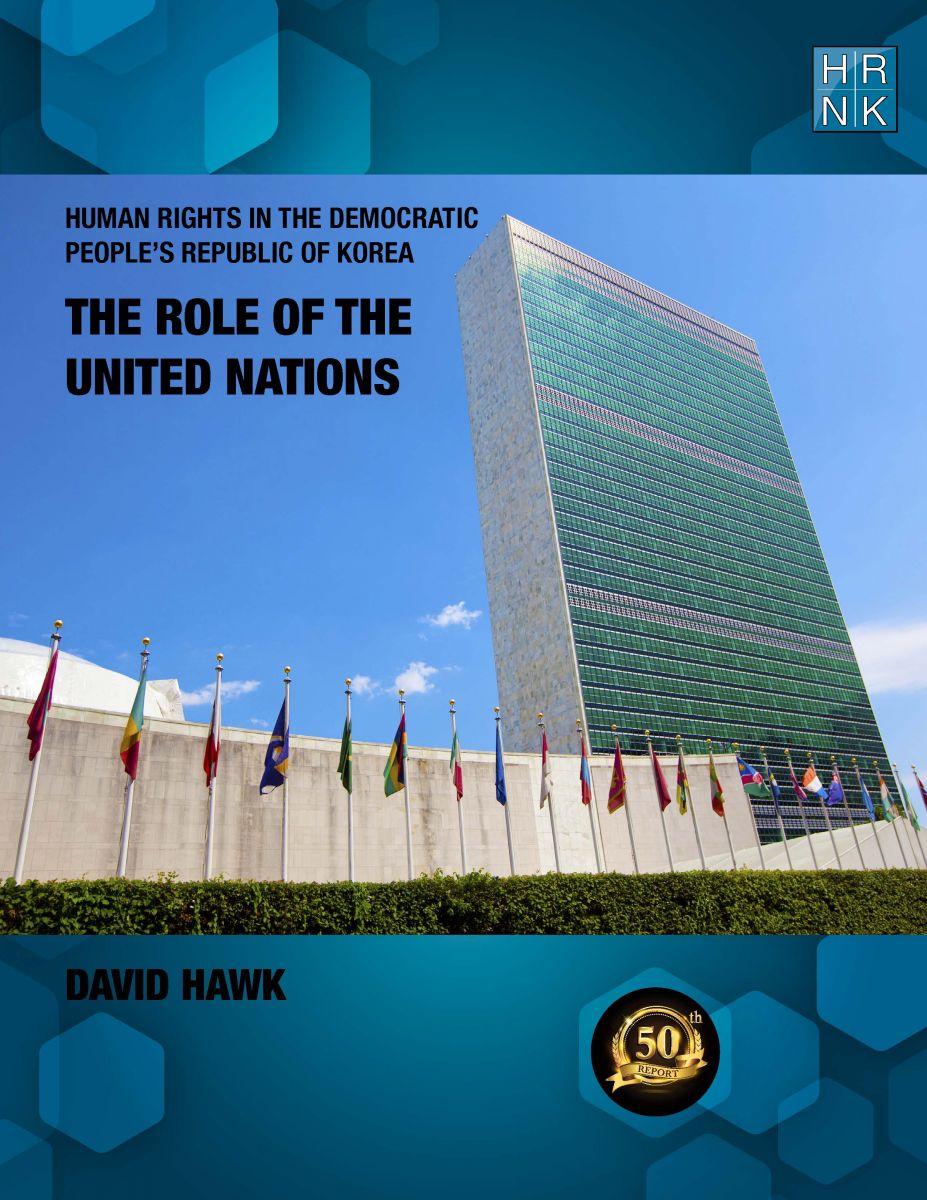
Human Rights in the Democratic Republic of Korea: The Role of the United Nations" is HRNK's 50th report in our 20-year history. This is even more meaningful as David Hawk's "Hidden Gulag" (2003) was the first report published by HRNK. In his latest report, Hawk details efforts by many UN member states and by the UN’s committees, projects and procedures to promote and protect human rights in the DPRK. The report highlights North Korea’s shifts in its approach
South Africa’s Apartheid and North Korea’s Songbun: Parallels in Crimes against Humanity by Robert Collins underlines similarities between two systematically, deliberately, and thoroughly discriminatory repressive systems. This project began with expert testimony Collins submitted as part of a joint investigation and documentation project scrutinizing human rights violations committed at North Korea’s short-term detention facilities, conducted by the Committee for Human Rights
